In life, she was the queen of Tejano music. In death, the 23-year-old singer is becoming a legend
By RICK MITCHELL
Copyright 1995 Houston Chronicle
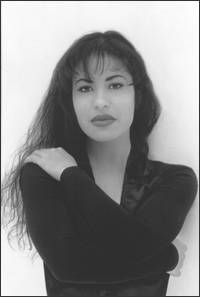 Abraham Quintanilla tried to remember his daughter as she'd looked
the last time he saw her, just the day before. Selena
Quintanilla-Perez was a full-grown woman of 23, a budding superstar
who dreamed of raising a big family with her guitarist/husband once
her music career settled down. She had a smile that could torch up
the night, and a figure that turned heads wherever she went. But the
only image that would come into focus in Abraham's mind was that of
an 8-year-old girl, standing nervously behind the microphone at the
family restaurant in Lake Jackson. Even back then, Abraham had been
convinced that Selena was destined to become a star. A former
musician himself, he recognized the rare power and precise pitch in
her voice.
Abraham Quintanilla tried to remember his daughter as she'd looked
the last time he saw her, just the day before. Selena
Quintanilla-Perez was a full-grown woman of 23, a budding superstar
who dreamed of raising a big family with her guitarist/husband once
her music career settled down. She had a smile that could torch up
the night, and a figure that turned heads wherever she went. But the
only image that would come into focus in Abraham's mind was that of
an 8-year-old girl, standing nervously behind the microphone at the
family restaurant in Lake Jackson. Even back then, Abraham had been
convinced that Selena was destined to become a star. A former
musician himself, he recognized the rare power and precise pitch in
her voice.
He had staked everything on her talent. From the band's early years
travelling the South Texas back roads in an old, beat-up van with a
foldout bed in the back, to playing for 60,000 rodeo fans in the
Astrodome, Selena had become the biggest star in Tejano music. She
was a household name in Mexico and much of Latin America and was on
the verge of an unprecedented breakthrough to the English-speaking
pop audience. Now, through a tragic turn of events, the dream
Abraham had shared with his wife, Marcela, and their three children
had been shattered. That morning, Selena had failed to show up at Q
Productions studio. It wasn't unusual for her to be late. Perpetual
tardiness was part of her charm.
But on this particular Friday morning, it was surprising that Selena
hadn't at least called. She had a 10 a.m. appointment with her older
brother, A.B., and sister, Suzette, to cut the vocal tracks for a
demo tape of a new song A.B. had written. Selena also was midway
through the recording of her first crossover album, with lyrics in
English. The album was coming together slowly because of her hectic
schedule. Eleven a.m. came and went, but there was still no word
from Selena. A.B. phoned Christopher Perez, her husband, who said
she'd left the house that morning at 9, while he was still in bed.
Chris didn't know where she'd gone, but he guessed that it had
something to do with Yolanda Saldivar, the former president of
Selena's fan club. Abraham and A.B. went to lunch. They returned to
the office just as the phone rang. Abraham's sister-in-law screamed
that Selena had been in an accident. Her father raced to the
hospital emergency room at Memorial Medical Center.
returned to
the office just as the phone rang. Abraham's sister-in-law screamed
that Selena had been in an accident. Her father raced to the
hospital emergency room at Memorial Medical Center.
At the hospital, Abraham learned there had been no accident. Selena
had been shot in the back and was listed as dead on arrival, a
doctor said, but they'd managed to get her heart started again
briefly and had given her a blood transfusion. Abraham, who'd
followed his father into the Jehovah's Witnesses faith some years
earlier, immediately reacted to the transfusion. "No! She doesn't
want that," he yelled. Only then did the horrible finality of the
doctor's words begin to sink in. Selena was dead. To children
growing up in barrios such as La Molina, the working-class Corpus
Christi neighborhood where the Quintanillas lived, Selena was la
reina del pueblo, a successful entertainer who'd never lost touch
with her roots. But to Abraham, she was still his little girl. The
one who had bounced up and down on his bed where he lay playing his
old guitar and singing the Mexican standards and pop songs he loved.
The beautiful little girl was gone.
The Quintanilla family was not alone in its grief. As word of
Selena's violent death on March 31 spread north and south out of
Corpus Christi, fans reacted first with disbelief, then with a
massive, public display of adoration. Signs appeared in cars
declaring "We love you, Selena!" or "Con tanto amor!" Churches
hastily organized prayer vigils. Tejano radio stations played
Selena's music around the clock. Record stores sold out of her
albums. On the weekend following her death, thousands of mourners
from Texas, Mexico and points farther made the pilgrimage to Corpus
Christi to pay their last respects. That Sunday, they filed into the
Corpus Christi Convention Center, where Selena's body lay in a black
coffin surrounded by white roses. After a rumor circulated that the
casket was empty, the family agreed to open it to confirm that the
horrible news was true. The Days Inn motel where Selena was shot
became a shrine to her memory, with messages from fans scrawled on
the walls of the room where the singer had met with her accused
killer, Saldivar, just before her death. Saldivar was suspected of
embezzling money from Selena's fan club. Selena had gone to the
hotel alone, at Saldivar's request, hoping to obtain documentation
that the accusations were untrue. Flowers and cards covered the
fence surrounding the house where Selena and Chris lived. Votive
candles lined the driveway.
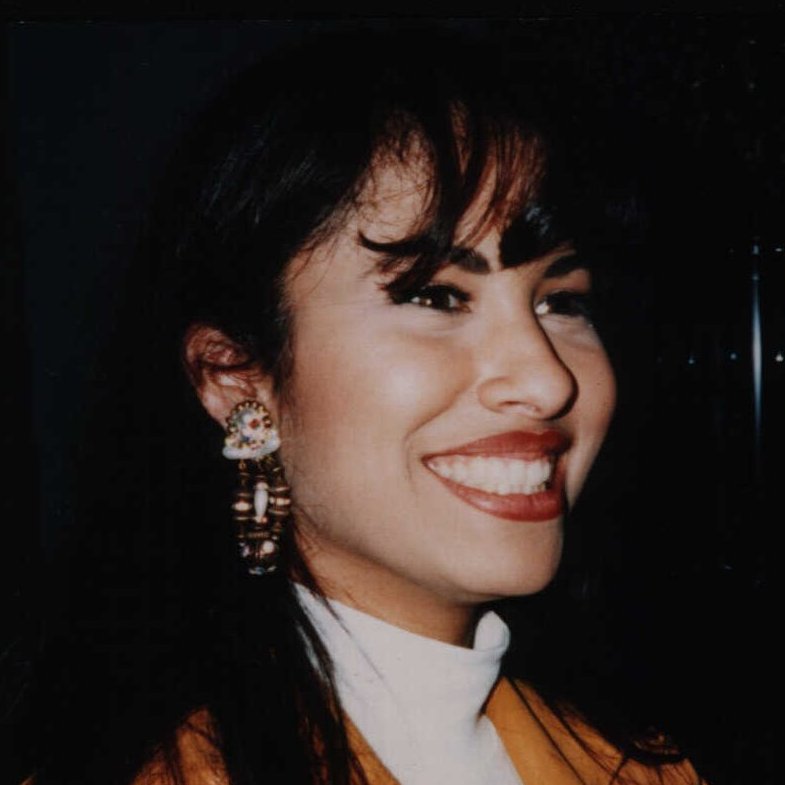 Outside the clothing boutiques Selena operated in Corpus and San
Antonio, hawkers sold souvenir T-shirts and ball caps bearing her
image. Following Selena's burial in a private ceremony on April 3,
her Seaside Memorial Park gravesite also became a shrine. Every
evening, the cemetery had to cart away truckloads of cards and
flowers. Abraham expressed surprise and gratitude at the outpouring
that followed his daughter's death. He speculated that Selena's
appeal went deeper than the music. "I knew that a lot of people
cared for Selena," he said. "I could see it in their faces
everywhere we played. But I'm really surprised by the magnitude of
this thing. I think people are tired of the wickedness of this
system. She was a good person, a clean person with morals. They
could see that. And there's not too much of that left in this
world." The week after Selena was killed, People magazine put her on
the cover in Texas and other Southwestern states. When the issue
instantly sold out at newsstands, the magazine decided to do a
commemorative issue in Selena's honor -- only the third such tribute
in the publication's history.
Outside the clothing boutiques Selena operated in Corpus and San
Antonio, hawkers sold souvenir T-shirts and ball caps bearing her
image. Following Selena's burial in a private ceremony on April 3,
her Seaside Memorial Park gravesite also became a shrine. Every
evening, the cemetery had to cart away truckloads of cards and
flowers. Abraham expressed surprise and gratitude at the outpouring
that followed his daughter's death. He speculated that Selena's
appeal went deeper than the music. "I knew that a lot of people
cared for Selena," he said. "I could see it in their faces
everywhere we played. But I'm really surprised by the magnitude of
this thing. I think people are tired of the wickedness of this
system. She was a good person, a clean person with morals. They
could see that. And there's not too much of that left in this
world." The week after Selena was killed, People magazine put her on
the cover in Texas and other Southwestern states. When the issue
instantly sold out at newsstands, the magazine decided to do a
commemorative issue in Selena's honor -- only the third such tribute
in the publication's history.
Yet, even as Selena's Spanish albums topped the Latin charts and
entered the mainstream pop charts in the weeks after her death, many
were still wondering how the Texas singer could have gained such a
large and devoted following. While shock jock Howard Stern joked
about the tragedy, others simply asked, "Who's Selena?" Selena was
Tejano music's brightest hope for the future. Had she lived, she
might well have been the first international superstar to come out
of the Tejano market. A vivacious entertainer who could sing any
style of music, her potential was unlimited. Even after her death,
Selena could become the first Tejano artist to break through to the
mainstream pop market. In July, EMI Records will release an album
including five English tracks, plus remixed and re-recorded versions
of her biggest Spanish hits. "We're going to do our best to give her
that English hit she wanted so badly," says EMI vice president Nancy
Brennan. The third child of Abraham and Marcela Quintanilla, Selena
was born on April 16, 1971, at the Community Hospital of Brazosport.
The family lived in nearby Lake Jackson, where Abraham was employed
by Dow Chemical Co. as a shipping clerk.
To Abraham, it seemed as if Selena was born happy. "She was just
full of life," he says. "She was always joking and clowning around."
To their neighbors in Lake Jackson, 55 miles south of Houston, the
Quintanillas looked like a loving, patriarchal family. "They were a
very close-knit family," says Carmen Read, who lived with her
husband, Ed, and their two sons around the corner from the
Quintanillas' house on Caladium Street. "I probably fussed at every
other kid in the neighborhood, but I don't think I ever fussed at
those kids. They were so well-behaved." A.B.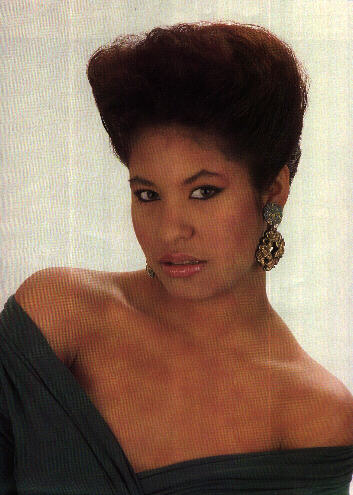 (short for Abraham
Quintanilla III) was eight years older than Selena; Suzette was four
years older. But if either ever resented their little sister tagging
along, it didn't show. "They were so close," says A.B.'s childhood
friend David Read. "I never recalled them arguing or not getting
along when they were out playing. They never had a complaint about
anything." Carmen took special notice of the Quintanillas because
they were one of the few Hispanic families in Lake Jackson at the
time. They reminded her of her own childhood: She grew up in one of
the only Mexican-American families in Silsbee, in East Texas.
(short for Abraham
Quintanilla III) was eight years older than Selena; Suzette was four
years older. But if either ever resented their little sister tagging
along, it didn't show. "They were so close," says A.B.'s childhood
friend David Read. "I never recalled them arguing or not getting
along when they were out playing. They never had a complaint about
anything." Carmen took special notice of the Quintanillas because
they were one of the few Hispanic families in Lake Jackson at the
time. They reminded her of her own childhood: She grew up in one of
the only Mexican-American families in Silsbee, in East Texas.
I always felt that (Abraham) was maybe a little too hard on the
kids," she says. "He was a typical hard-working, strict Mexican
father. He definitely was the head of the household. I was raised in
that same kind of household. Maybe that's why I always paid more
attention to them. But I think those that lived here knew that they
weren't a common, everyday family." Abraham acknowledges that he was
a strict father. He didn't allow his children to sleep over at other
kids' houses, and he didn't believe in casual dating. If he was too
hard on his kids, he says, it's because he remembered his own wild
childhood in Corpus Christi. "All these years, I knew where my kids
were 24 hours a day," he says. "Maybe I overdid it, I don't know. I
just didn't want them to go through what I went through. I was a
street kid. My parents couldn't control me when I was young." Early
on, Selena began to exhibit an irrepressible personality all her
own. Nina McGlashan, Selena's first-grade teacher at O.M. Roberts
Elementary School, remembers her as a delightful child.
"She had a very bubbly, positive-type of personality," says the
former Nina Smith. "She was eager to please and eager to learn. The
type of little kid that you would like to have in a class. I
remember, too, that she had a little shyness about her." All three
Quintanilla children showed an early interest in music, their father
says. They came by it naturally. In the 1950s and '60s, prior to
moving to Lake Jackson, Abraham led a band in Corpus Christi called
Los Dinos. The name was taken from the Italian slang word for los
muchachos, the boys. Los Dinos played a mix of early rock 'n' roll
and traditional Mexican music, with three-part harmony vocals and a
horn section. But in those days, opportunities were limited in what
was known as Tex-Mex or Chicano music. Abraham eventually gave up on
the music business and took a job at Dow to support his growing
family. Selena was 6 when Abraham noticed that she had a remarkable
voice. He was teaching A.B. a few chords on the guitar when Selena
burst into song. "I always wanted to go back into the music
business, but I felt like I was already getting too old, and my kids
were growing up," Abraham says. "When I found out Selena could sing,
that's when the wheels started turning in my mind. I saw the chance
to get back in the music world through my kids."
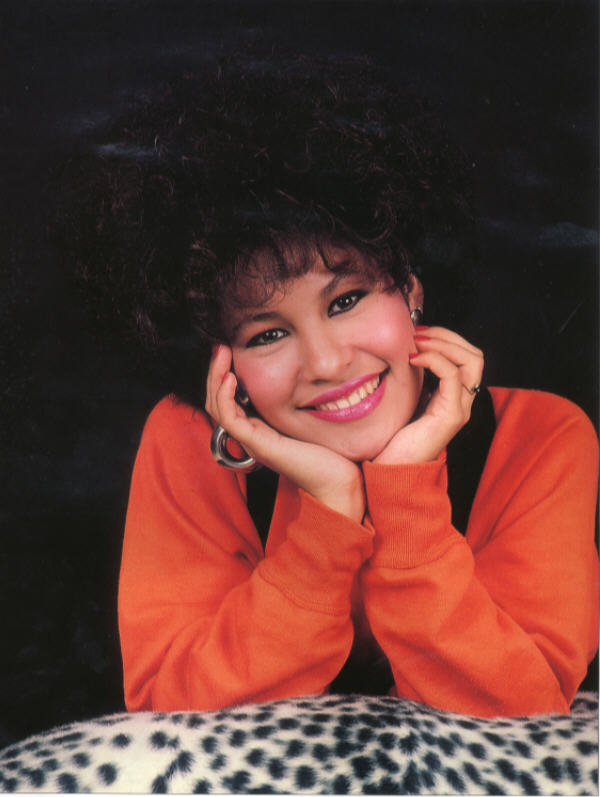 While many parents have entertained similar fantasies, Abraham was
convinced that he had a special talent to work with. "I felt that
Selena had it since she was a little girl," he says. "She had that
extra thing that makes an artist. Of course, nobody believed me at
that time." With his wife's support, Abraham converted his garage
into a music studio. A friend gave him an old Sears Silvertone bass,
and he bought a set of drums. A.B. picked up the bass, and Suzette
was assigned to the drums. "They knew zero about music," Abraham
says. "I just placed the instruments in their hands and said, 'All
right, let's go.' "At first, they were too young," he says. "They
had a short attention span. They would want to go play with the
other kids. Then they started getting into the music. They started
creating. You know how it is." The little family band rehearsed
almost every day after school. "We did all the normal kid things
together," says David Read. "But they always knew when it was time
to go practice. I used to go in there and watch sometimes. Selena
always seemed to be having a great time."
While many parents have entertained similar fantasies, Abraham was
convinced that he had a special talent to work with. "I felt that
Selena had it since she was a little girl," he says. "She had that
extra thing that makes an artist. Of course, nobody believed me at
that time." With his wife's support, Abraham converted his garage
into a music studio. A friend gave him an old Sears Silvertone bass,
and he bought a set of drums. A.B. picked up the bass, and Suzette
was assigned to the drums. "They knew zero about music," Abraham
says. "I just placed the instruments in their hands and said, 'All
right, let's go.' "At first, they were too young," he says. "They
had a short attention span. They would want to go play with the
other kids. Then they started getting into the music. They started
creating. You know how it is." The little family band rehearsed
almost every day after school. "We did all the normal kid things
together," says David Read. "But they always knew when it was time
to go practice. I used to go in there and watch sometimes. Selena
always seemed to be having a great time."
It wasn't long before Abraham left Dow to open a Mexican food
restaurant, Papagayo, in Lake Jackson. He made sure it had a stage
and a dance floor. Selena and the band performed on weekends and
developed a local following. "It was so unusual," says Ed Read. "You
wouldn't expect to see a kid get up and sing in a restaurant like
that. Her voice was a little higher, but she was on key and she
always had a lot of enthusiasm." Abraham keeps a tape of 9-year-old
Selena singing a Spanish version of Rick James' funk classic "Super
Freak." While her voice is a bit squeaky, the phrasing is on the
money. "I can see her in my mind," Abraham says. "She was an awesome
dancer as a little girl. She had a lot of what black people would
call soul. And she could sing any kind of music." Nineteen-year-old
Rena Dearman answered an ad Abraham put in the Brazosport Facts for
a lead guitarist and a keyboardist. Her boyfriend (later husband)
Rodney Pyeatt played guitar; she played keyboards.
Dearman says she was impressed the first time she heard Selena sing.
"I didn't expect to hear what I heard," she says. "Of course, her
intonation was going to be higher. But it's what she did with the
notes. This girl had some vibrato on her. She could make it work.
Her release from the notes, it wasn't like your everyday little girl
singing. She sounded more like a young woman." Abraham pushed the
band hard to improve, Dearman says. Every day they weren't playing
at the restaurant, they were in the garage practising. The
repertoire was mostly Top 40 hits sung in English and the occasional
pop oldie with Spanish lyrics that Abraham had translated. Then he
started writing his own songs in Spanish for the band. Dearman came
to feel like a member of the family, and she looked up to Abraham.
He had a temper, but he was fair. "I respected what he was trying to
accomplish. When he would be the way he is, I didn't take it the
wrong way. He was taking care of business. The man had a goal. He
knew what he was doing. And he was a good daddy. He loved those
kids."
As it turned out, Abraham was better at managing a band than he was
at running a restaurant. "I was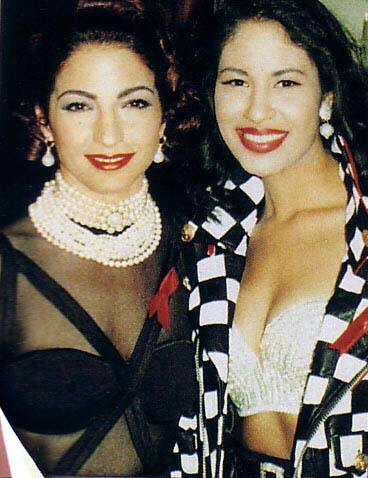 inexperienced in the restaurant
business," he says. "One day I decided that's what I wanted to do.
The following week I'm already leasing the place. I had a big
overhead. All the money I had saved went into the initial cost of
opening." And when the oil business dried up in the early '80s, the
restaurant went broke. Abraham had to borrow money from his brother
Hector to move his family back to his hometown of Corpus. The band
became the household's sole means of support. It might have seemed
like a desperate situation. But Abraham says he didn't see it that
way. "I always knew that Selena was gonna go. I never had any
doubt." The band traveled all over the state, from Lake Jackson to
Laredo to El Paso, playing little clubs, wedding dances and
quinceaneras. There were seven people in the old van. Abraham was
the manager and sound engineer, and Marcela served as light
technician. Selena enrolled in junior high school in Corpus. But the
band's schedule often forced her to miss Friday and Monday classes.
After a few months, she dropped out and continued her education
through correspondence courses. She earned a GED at 17.
inexperienced in the restaurant
business," he says. "One day I decided that's what I wanted to do.
The following week I'm already leasing the place. I had a big
overhead. All the money I had saved went into the initial cost of
opening." And when the oil business dried up in the early '80s, the
restaurant went broke. Abraham had to borrow money from his brother
Hector to move his family back to his hometown of Corpus. The band
became the household's sole means of support. It might have seemed
like a desperate situation. But Abraham says he didn't see it that
way. "I always knew that Selena was gonna go. I never had any
doubt." The band traveled all over the state, from Lake Jackson to
Laredo to El Paso, playing little clubs, wedding dances and
quinceaneras. There were seven people in the old van. Abraham was
the manager and sound engineer, and Marcela served as light
technician. Selena enrolled in junior high school in Corpus. But the
band's schedule often forced her to miss Friday and Monday classes.
After a few months, she dropped out and continued her education
through correspondence courses. She earned a GED at 17.
Not everyone approved of the family's unusual lifestyle. Abraham
says his father and brother told him, "You're going to ruin your
kids. They'll be surrounded by drinking and drugs. It's going to
have an effect on them." But Selena did not seem at all upset about
missing out on a normal adolescence, Dearman says. "The only thing I
knew is that she loved what she was doing. She was having fun. I
don't think she'd have been as happy doing something else if she
wasn't singing. When she was onstage, she was into doing her thing.
If the people responded, so much the better."
While Selena was the star of the show, she remained unaffected by
the attention she received onstage. "She never got haughty with us.
She never changed," Dearman says. "She was as fun-loving back then
as she would be later." Dearman's most vivid memories from the early
years of the band are the long conversations she shared with the
family members in the back of the van. While Pyeatt and Abraham
sometimes engaged in intense religious discussions -- Pyeatt was a
Baptist, Abraham a Jehovah's Witness -- the kids talked about more
personal things.
"I know how they got to be the way they are," Dearman says. "It's
because of their parents. Selena grew up to be a good girl. They
were taught work ethics, compassion and how not to snub people. They
believed that if you treat people good, it'll come back to you in
the end." Dearman left Selena's band when Pyeatt decided to form his
own country band. She really didn't want to quit, but she felt she
had to follow her husband. The pair divorced several years later. "I
was willing to back up Selena for as long as it took," she says. "I
had so much confidence in Abraham. He was going to make the world
see what he saw in Selena. I know A.B. felt the same way. They knew
they had something special there." But for all his pride and
conviction, Abraham admits he had an eye-opening experience when he
booked the band to open for Mazz at the fairgrounds in Angleton. It
was 1983. Mazz was the hottest thing in the Tejano market at the
time.
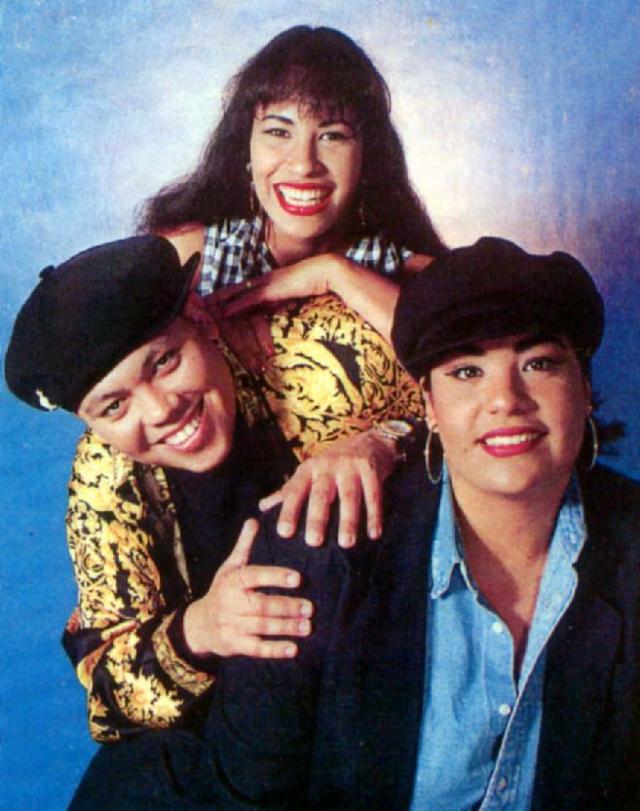 "When we got to the hall, their road crew had already set up,"
Abraham says. "When I saw all their equipment, I freaked out. When I
was playing, this kind of equipment didn't exist, like crossovers
and equalizers. On one side, they had a stack of about 30 speakers
and 30 more speakers on the other side. "I told my son A.B, `You
know what? I think we're at the wrong place. I think this is a rock
'n' roll dance or something.' "We started walking out, and the
promoter came in. I said, `Is this the place where we're gonna play
tonight?' He said, `Yes.' I said, `Whose equipment is that?' He
said, `Mazz.' "That night, after Selena opened up the show for them,
they came on. It totally scared me. That kick-drum was so powerful
it shook my shirt, and I had never seen smoke and lights like that.
"When we got to the hall, their road crew had already set up,"
Abraham says. "When I saw all their equipment, I freaked out. When I
was playing, this kind of equipment didn't exist, like crossovers
and equalizers. On one side, they had a stack of about 30 speakers
and 30 more speakers on the other side. "I told my son A.B, `You
know what? I think we're at the wrong place. I think this is a rock
'n' roll dance or something.' "We started walking out, and the
promoter came in. I said, `Is this the place where we're gonna play
tonight?' He said, `Yes.' I said, `Whose equipment is that?' He
said, `Mazz.' "That night, after Selena opened up the show for them,
they came on. It totally scared me. That kick-drum was so powerful
it shook my shirt, and I had never seen smoke and lights like that.
"On the second set, I didn't want my kids to go back on. I was
embarrassed. We had a little rinky-dink sound system. I found out
that night that things had changed from the last time I'd been in
the music business."
Selena made her commercial recording debut with Los Dinos when she
was 12. Her first full album, "Mis Primeras Grabaciones," was
released in 1984 on Corpus Christi's Freddie label, one of the
oldest and most established independent Tex-Mex outfits. Rick
Longoria, who engineered the session for label owner and producer
Freddie Martinez, recalls that Selena cut the vocals in just a few
takes. "She was very professional," Longoria says. "She'd be sitting
there while the session was going on, doing little girl things. It
was kind of hard to believe that she was the vocalist. "But when she
started to sing, it was no problem. I've done sessions with people
twice her age where we'd be there doing things over and over because
they couldn't get it right." A single from the album, Ya Se Va,
generated some airplay, but the album didn't sell well. Selena y Los
Dinos promptly left Freddie for the Cara label, then moved on to the
Manny label. "Right from the start, we thought she had some good
talent," says Longoria, who now handles marketing and promotion for
Freddie. "But she still needed to develop. We thought it would take
about three or four years before she came into her own, and that's
exactly what happened.
While Selena emerged as a recording artist, A.B. developed as a
songwriter and producer. He was motivated by the need to provide
Selena with strong, original material. "We had no songs. We were
constantly looking for material," Abraham says. "A.B. would approach
Luis Silva, who was a strong writer in the market, and he would
ignore us. A.B. got upset. I said, 'Son, you need to go in that room
there and just break your head until you write something good.'
"That was the beginning." One of A.B.'s first efforts, "Dame un
Beso," was a moderate hit. A.B., who was already the band's arranger
and producer, soon took over as Selena's chief songwriter. Band
member Ricky Vela also wrote, sometimes in collaboration with A.B.
Although Selena could sing in any style, the band's versatile
approach was dictated as much by necessity as by choice.
"In certain areas of Texas, the Valley, for example, accordion music
is very strong," says Abraham. "When we would go to the Valley, we
would do more accordion-type songs, using the keyboard. "In parts of
West Texas, they want the cumbias, so we would give them more
cumbias. And in Houston and Dallas, the young people want more pop
music, so that's what we'd do." Daniel Bustamente, producer of
Houston's Festival Chicano, remembers Selena's first appearance at
Miller Outdoor Theater, when she was just 15. "She was nervous," he
says. "She was playing second to Ram (Herrera) or Little Joe. The
music was still not as full, but she always impressed everybody with
that voice. The way she was able to do different things with her
voice was like an opera singer, in a sense." By 1988, Selena was
popular enough in the Texas market that she was voted female
vocalist of the year at the Tejano Music Awards in San Antonio. She
would go on to win the award for seven consecutive years. Selena's
albums for the Manny label were selling in the range of
20,000-25,000 copies, a respectable figure for a regional Tejano
artist. She also was gradually building a reputation beyond the
Texas borders.
But the Quintanillas were hardly getting rich. Johnny Canales, the
Corpus Christi-based radio and television personality, recalls a
trip he took to Idaho on the Los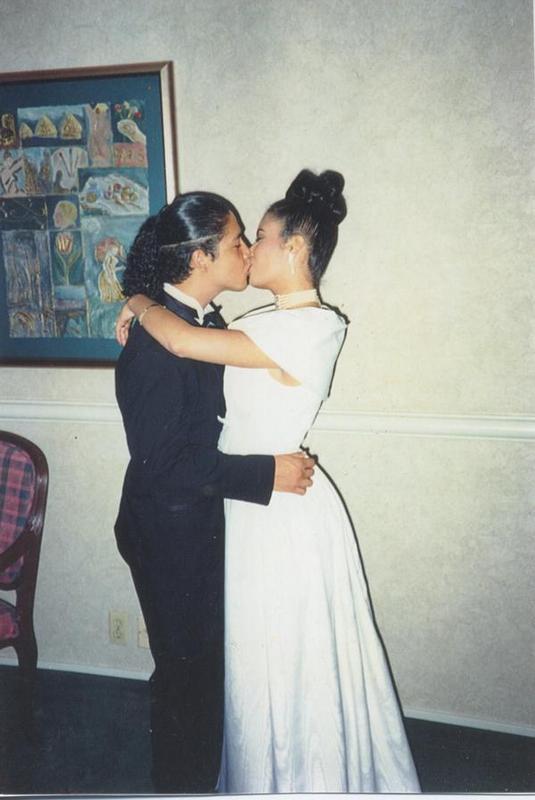 Dinos bus. "They were living on
beanies and wienies," Canales says. "She lived through those hard
times. That's why, for her, the good times were nothing. She never
changed." On the front of the band's bus, above the windshield where
touring acts customarily put their names, was the pointed disclaimer
"Nobody You Know." It's still there. The turning point in Selena's
career came in 1989. Jose Behar, the former head of Sony's Latin
music division, had just launched the EMI Latin label. He'd come to
the Tejano Music Awards looking for new acts to sign. Selena was his
first discovery. "I was with a friend of mine, Mario Ruiz, who's now
the president of EMI Mexico," Behar says. "We were standing at the
back of the auditorium when we saw her. Mario and I looked at each
other like, `Wow. This is special.'
Dinos bus. "They were living on
beanies and wienies," Canales says. "She lived through those hard
times. That's why, for her, the good times were nothing. She never
changed." On the front of the band's bus, above the windshield where
touring acts customarily put their names, was the pointed disclaimer
"Nobody You Know." It's still there. The turning point in Selena's
career came in 1989. Jose Behar, the former head of Sony's Latin
music division, had just launched the EMI Latin label. He'd come to
the Tejano Music Awards looking for new acts to sign. Selena was his
first discovery. "I was with a friend of mine, Mario Ruiz, who's now
the president of EMI Mexico," Behar says. "We were standing at the
back of the auditorium when we saw her. Mario and I looked at each
other like, `Wow. This is special.'
"But I turned to him and I said, `It's interesting. Women don't sell
in the Tejano market.' And they really hadn't. Yet I said to myself,
`This is the crossover act I'm looking for.' "So I went backstage to
meet her and she said, `Y'all from EMI? Yeah, right.' And she kept
talking to some other people. I said, `Excuse me, I'm really from
EMI.' And she said, `Yeah, right' again. I think she thought I was
some jerky fan or something, I don't know. "I ended up talking to
her dad. The real reason I signed Selena, and her family knows this,
was not to sell a lot of records in the Latin Tejano market. The
God's honest truth is I never thought she'd sell a half-million
units in Spanish. It just wasn't on the agenda. "The reason I signed
her is because I thought I had the next Gloria Estefan." Selena's
first couple of albums for EMI sold only marginally better than her
Manny releases. Her breakthrough hit was "Buenos Amigos," a 1991
duet with Alvaro Torres. Thanks in part to a sophisticated video
that featured Selena and Torres crooning in front of a string
orchestra, the ballad went to No. 1 on the Billboard Latin tracks
chart and introduced Selena to audiences on the East and West
coasts.
She followed this with a guest appearance on "Dondequiera Que Estés"
by the Barrio Boyzz, Latin music's answer to New Kids on the Block
and Boyz II Men. Selena was seen in the video singing and dancing in
hip-hop formation with the Boyzz against an urban backdrop. Clearly,
there was more to this Tejana than accordions and cowboy hats. These
videos opened the door for Selena to enter the international Latin
market with her own hits, "La Carcacha" and "Como la Flor." While
Tejano artists Mazz and La Mafia had toured in Mexico, Selena was
the first to truly conquer the huge audience south of the border.
"For the first time, we exposed Mexicans to what Tejano music was,"
says Behar. "And once you go into Mexico, that tidal wave is felt in
California." Canales, whose Corpus Christi TV program is syndicated
internationally, agrees that Mexico was the key. "As soon as she hit
Mexico, we knew she was gone," he says. "For a Tejano artist to
cross into that market is hard. She took it over like it was
nothing."
Selena's success in Mexico and other Latin American countries was
aided by A.B.'s ability to craft a tropical, international sound.
Where Tejano music's deepest roots are in the bouncy
norteño/conjunto polka rhythms popular in Northern Mexico and Texas,
Selena y Los Dinos invited listeners to "Baila Esta Cumbia." An
Afro-Caribbean cousin to salsa and merengue, cumbia originated in
Colombia. As it migrated north through Central America and Mexico,
the music adapted to each region. In Colombia, it's often played in
a big-band style, like salsa. In Texas, accordion-based conjuntos
play stripped-down cumbias along with the polkas and two-steps.
A.B.'s approach with Selena was more ambitious. On "Techno Cumbia,"
from the 1994 album "Amor Prohibido," he added elements of funk,
reggae and salsa into a high-tech dance mix. "I've studied it, and I
found a way to do it," A.B. said in an interview three weeks before
Selena's death. "The cumbia can get airplay in Puerto Rico, New
York, Miami, Mexico, anywhere."
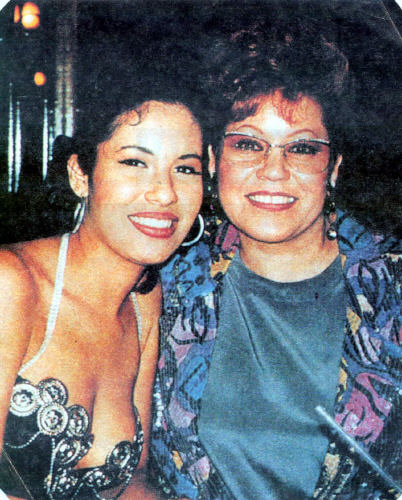 It is A.B.'s contention that Tejano music's core market has not
grown all that much in the last 10 years. What has changed is the
ability of certain Tejano artists to appeal to the wider Latin pop
audience. "They call us Tejano, and yes, we are from Texas. But a
lot of the music we're playing is from Mexico and South America," he
said. Selena y Los Dinos' music is "a mixture of tropical, reggae,
cumbia, all these things. It's got pop influences to it, too." A.B.,
who produced Selena's Spanish albums, was also co-producing three
tracks on her English debut. While he acknowledged the record
label's reasons for bringing in outside producers, he felt he had an
advantage over other songwriters and producers working with his
sister. "I've been with Selena since she was 6 years old," he said.
"I've backed her every night on bass. I've seen the reaction, and
felt the vibe. It's a piece of cake."
It is A.B.'s contention that Tejano music's core market has not
grown all that much in the last 10 years. What has changed is the
ability of certain Tejano artists to appeal to the wider Latin pop
audience. "They call us Tejano, and yes, we are from Texas. But a
lot of the music we're playing is from Mexico and South America," he
said. Selena y Los Dinos' music is "a mixture of tropical, reggae,
cumbia, all these things. It's got pop influences to it, too." A.B.,
who produced Selena's Spanish albums, was also co-producing three
tracks on her English debut. While he acknowledged the record
label's reasons for bringing in outside producers, he felt he had an
advantage over other songwriters and producers working with his
sister. "I've been with Selena since she was 6 years old," he said.
"I've backed her every night on bass. I've seen the reaction, and
felt the vibe. It's a piece of cake."
"Amor Prohibido" spawned four No. 1 Latin singles, including the
title track, "No Me Queda Más," "Bidi Bidi Bom Bom" and "Fotos y
Recuerdos." The last tune is an inspired Spanish cover of Chrissie
Hynde and the Pretenders' '80s rock classic, "Back on the Chain
Gang." The album knocked Gloria Estefan's "Mi Tierra" out of the top
spot on the Latin chart and has sold more than 800,000 copies
worldwide. It is destined to pass 1 million this year. Yet A.B. says
he accomplished only half of what he set out to do on "Amor
Prohibido." His vision of a Pan-American, tropical-pop blend
incorporating all his influences remains unfulfilled. Selena's
success south of the border was not without complications. Although
she sang in Spanish, she grew up speaking English. In the early days
of the band, Abraham had to teach her the Spanish lyrics
phonetically. She was unable to do interviews with the Mexican media
without an interpreter. "My first language is Spanish, hers is
English," says Manolo Gonzalez, the Cuban-born vice president in
charge of EMI's San Antonio office. "When she talked to me, she
talked to me in English, never in Spanish.
"But you see, Selena was a smart girl. She had the intuition to know
what people wanted to see and hear. In the last four years, she made
it a point to learn (Spanish). When we went to Mexico in the last
month of 1994, I couldn't believe how well she could handle the
press." Selena's longtime fans had watched her mature into a
stunning young woman. She often performed in skin-tight pants and
low-cut bustiers that led some to label her "the Mexican Madonna."
But despite the comparisons, Selena wouldn't compromise her morals
to further her career. She could be sexy onstage, but she was never
vulgar. She once turned down a role in a Mexican soap opera because
there was a scene that called for a steamy kiss. "I wouldn't be
comfortable with that; she wouldn't be comfortable with that,"
Abraham said at the time. "Selena has an appeal with young kids, 5
to 10 years old, as well as older folks, you know."
Jose Behar says the record label never told Selena what to sing or
how to look, although he did dictate that she appear on her album
covers alone, rather than with the band. "The only thing she and
Madonna had in common was bustiers," Behar says. "Selena never
stooped to those levels. Great artists don't have to do that." He
compares Selena to a cross between Whitney Houston and Janet Jackson
in terms of her image and vocal range. Canales goes a step further.
"I'd say she's like those people, but better," he says. "Those
people never sang Tejano. She could do what they do, but it would be
hard for them to do what she does." Still, it took the better part
of four years before Behar finally was able to convince EMI's pop
division that he had a potential crossover superstar on his roster.
It seemed that no sooner would he have the right executive persuaded
than that person would leave the company and he'd have to start all
over again. "All he ever talked about was Selena," remembers Nancy
Brennan, EMI's vice president of artist and repertoire. "He was like
a broken record, `Selena, Selena . . . ' "
Brennan's first exposure to Selena was at the Billboard Latin Music
convention in Las Vegas two years ago. Brennan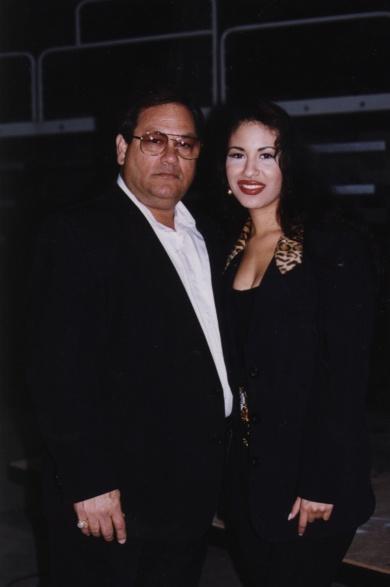 was there to see Jon Secada, an EMI artist who was enjoying huge success in the English
and Spanish markets simultaneously. Selena happened to be opening
the show. Brennan was suitably impressed. Selena was signed by EMI's
SBK subsidiary in December 1993. But it was another year before she
could begin work on her debut album in English. First there was the
touchy matter of selecting the right material and producers. Then
"Amor Prohibido," somewhat unexpectedly, became a huge hit in the
Latin market. Between touring with the band, filming commercials and
movie roles, and overseeing the opening of her new custom-clothing
boutiques, Selena was in constant demand. Hispanic Business magazine
listed her as one of the most successful Latin entertainers in the
world, with annual earnings estimated at $5 million. She made her
movie debut this year, playing a mariachi singer in the Marlon
Brando/Johnny Depp feature "Don Juan DeMarco."
was there to see Jon Secada, an EMI artist who was enjoying huge success in the English
and Spanish markets simultaneously. Selena happened to be opening
the show. Brennan was suitably impressed. Selena was signed by EMI's
SBK subsidiary in December 1993. But it was another year before she
could begin work on her debut album in English. First there was the
touchy matter of selecting the right material and producers. Then
"Amor Prohibido," somewhat unexpectedly, became a huge hit in the
Latin market. Between touring with the band, filming commercials and
movie roles, and overseeing the opening of her new custom-clothing
boutiques, Selena was in constant demand. Hispanic Business magazine
listed her as one of the most successful Latin entertainers in the
world, with annual earnings estimated at $5 million. She made her
movie debut this year, playing a mariachi singer in the Marlon
Brando/Johnny Depp feature "Don Juan DeMarco."
"This is the first time I have ever made a debut album by an artist
who was too busy to record for me," Brennan groused good-naturedly
in early March. "How can you tell someone, `No, I don't want you to
play the Astrodome for 60,000 people; I want you to work on your
record?' Everyone wants her." But Brennan had little doubt that when
it did come out, the album would make Selena an international
superstar. "I think Selena can do anything she wants to do," she
said. "She can have a successful career in two languages. She's got
the pipes. She's got the heart. She's got the look. "If I had to put
my own money on the line, I would bet on this one. I would say
multi-platinum is to be expected, and the sky's the limit." Back in
1988, A.B. had invited a 17-year-old San Antonio guitarist named
Christopher Perez to join Los Dinos. Chris played with the band for
a couple of years, then quit for a year to pursue his love for rock
'n' roll. Abraham says it was only after Chris returned to the band
that he noticed the lead guitarist and the singer seemed to have
something brewing between them. Throughout her teen-age years,
Selena's career left her with little or no time for socializing.
There had been one boy, a few years earlier, who pursued an interest
in her. But Abraham hadn't allowed the two to be alone together.
Initially, he was opposed to Selena getting involved with anyone,
much less a member of the band.
"Like I said, I was a very possessive father," Abraham says. "I
thought she was too young, that her career was beginning to blossom,
and that she had a great future ahead of her. I didn't want anything
to distract her from this." But after he got to know Chris better,
Abraham came to accept the relationship wholeheartedly. "I saw how
he was, his personality, his whole being," he says. "I care for him
like a son now." Chris and Selena were married on April 2, 1992. The
groom was 22, the bride not quite 21. They shared a house on a
corner lot in La Molina, a working-class neighborhood on the
agricultural outskirts of Corpus Christi. Abraham and Marcela lived
next door, and A.B. lived next to them with his wife and two kids.
Among the three houses, there were nine dogs, five of which belonged
to Selena. She loved animals. While Selena felt at home in La
Molina, she and Chris were planning to move soon to more spacious
quarters. The couple had purchased land farther outside of town on
which they intended to build a house and eventually to start a
family. Selena already had picked out the furniture.
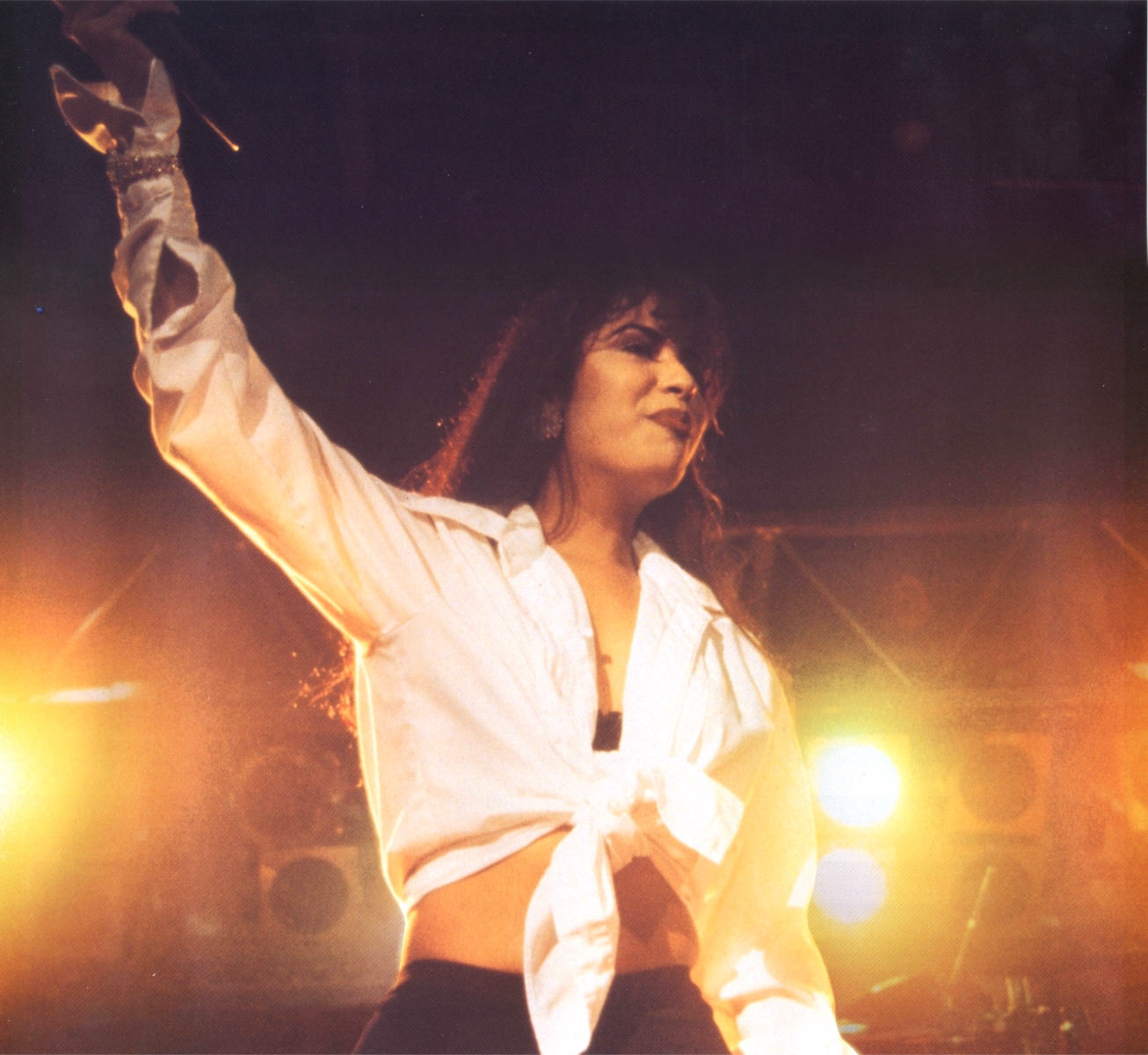 About five years ago, shortly before Selena's career went into
overdrive, Abraham began receiving calls from a San Antonio woman
named Yolanda Saldivar. The woman said she wanted to start a Selena
fan club. She told Abraham she would apply for a non-profit charter
and donate some of the money to charitable causes. At first, Abraham
ignored her. Eventually, he gave in to her persistence. "My interest
was in publicity for Selena," he says. Saldivar, who worked as a
registered nurse with tuberculosis patients at the San Antonio State
Chest Hospital, became Selena's No. 1 fan. Although she was in her
30s, she screamed like a teen-ager at Selena's concerts. She turned
her home in San Antonio into a virtual museum of Selena memorabilia,
complete with a wall-size photograph. Saldivar was allowed on the
band bus whenever Selena played San Antonio. But Selena had little
other contact with her until about nine months ago, Abraham says.
That's when Saldivar was hired, at Selena's suggestion, to manage
the Selena Etc. boutiques in Corpus and San Antonio. The boutiques
may have been Selena's way of asserting her independence from the
family. She loved to shop for clothes, and she designed the sexy
outfits she wore onstage. Now she wanted to prove that she could be
a successful businesswoman. Although Saldivar had no previous
experience at running a business, Abraham went along with Selena's
choice.
About five years ago, shortly before Selena's career went into
overdrive, Abraham began receiving calls from a San Antonio woman
named Yolanda Saldivar. The woman said she wanted to start a Selena
fan club. She told Abraham she would apply for a non-profit charter
and donate some of the money to charitable causes. At first, Abraham
ignored her. Eventually, he gave in to her persistence. "My interest
was in publicity for Selena," he says. Saldivar, who worked as a
registered nurse with tuberculosis patients at the San Antonio State
Chest Hospital, became Selena's No. 1 fan. Although she was in her
30s, she screamed like a teen-ager at Selena's concerts. She turned
her home in San Antonio into a virtual museum of Selena memorabilia,
complete with a wall-size photograph. Saldivar was allowed on the
band bus whenever Selena played San Antonio. But Selena had little
other contact with her until about nine months ago, Abraham says.
That's when Saldivar was hired, at Selena's suggestion, to manage
the Selena Etc. boutiques in Corpus and San Antonio. The boutiques
may have been Selena's way of asserting her independence from the
family. She loved to shop for clothes, and she designed the sexy
outfits she wore onstage. Now she wanted to prove that she could be
a successful businesswoman. Although Saldivar had no previous
experience at running a business, Abraham went along with Selena's
choice.
"Yolanda had been president of the fan club for four years," he
says. "I took for granted everything had been going smoothly." What
the family didn't know was that Saldivar had been accused by a San
Antonio doctor of stealing more than $9,000 in 1984 when she worked
as his bookkeeper. The Aetna insurance company paid off the doctor
and then settled out of court with Saldivar. Nor did they know that
Saldivar had failed to pay off her college loan, and had left a job
as a nurse's aide under questionable circumstances in the early
'80s. Selena misread Saldivar's obsession for friendship. When
Saldivar gave Selena a ring made of the miniature Faberge eggs
Selena loved, Abraham told his daughter he was wary of Saldivar's
motives. He wondered about the nature of her attraction. Selena
replied, "Oh, Dad, come on. Everyone's weird to you," he remembers.
Even after boutique employees complained of Saldivar's incompetent
and devious management, Selena was reluctant to believe that her
biggest fan had anything but her best interest at heart.
"Selena had the same personality as my wife," Abraham says. "If I
see one discrepancy, then I'm on the alert. But she could see 20
discrepancies and then, when they finally get ready to take action,
they say, `Well, maybe they needed the money more than I did.'"
In March, Abraham had accused Saldivar of embezzling money from the
fan club and boutiques. The family had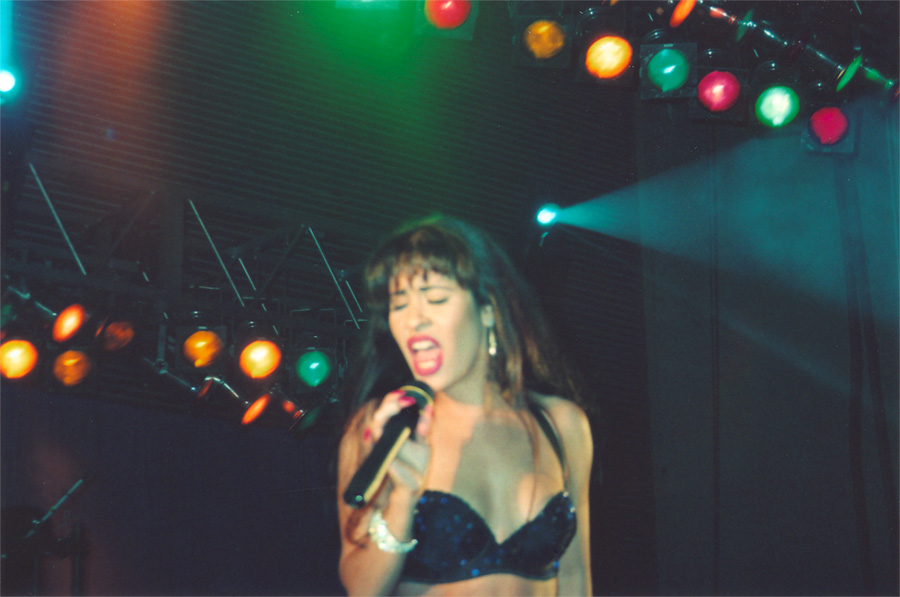 found four checks, including
one for $3,000, she'd written to herself on the fan club account.
"If you've ever seen a cornered animal, you know how she reacted,"
he says. Abraham had no way of knowing that a few days after their
confrontation, Saldivar purchased a 38-caliber revolver in San
Antonio. "I know Selena had made the decision to let her go," says
Manolo Gonzalez. "But because of her nature, she wanted to let her
down easy. She wanted to let her go in a way that they could still
be friends. "I guess Selena saw in her a dedicated person, someone
she could trust. Selena was very trusting."
found four checks, including
one for $3,000, she'd written to herself on the fan club account.
"If you've ever seen a cornered animal, you know how she reacted,"
he says. Abraham had no way of knowing that a few days after their
confrontation, Saldivar purchased a 38-caliber revolver in San
Antonio. "I know Selena had made the decision to let her go," says
Manolo Gonzalez. "But because of her nature, she wanted to let her
down easy. She wanted to let her go in a way that they could still
be friends. "I guess Selena saw in her a dedicated person, someone
she could trust. Selena was very trusting."
In late March, Selena sent Saldivar to Monterrey, Mexico, where she
was planning to open a new boutique. Saldivar was told that when she
returned she should provide bank statements and other documents that
could establish her innocence. Coming across the border, Saldivar
called Selena to say that her car had been stolen and she'd been
abducted and raped. She sounded hysterical on the phone. Selena felt
she was stalling. But the singer still held out hope that her father
was mistaken about Saldivar. And she insisted that Saldivar see a
doctor when she got back to Corpus. On Thursday night, March 30,
Saldivar called Selena from the Days Inn on Navigation, not far from
the Q Productions office and studio. But when Chris and Selena
arrived at the motel, Saldivar failed to provide the documents
Selena was hoping for. Nor would she go to the hospital. At about
midnight, Saldivar called again to say she was bleeding internally
as a result of the rape. She asked that Selena return to the motel
alone, but Chris persuaded his wife to deal with it in the morning.
Selena left early on Friday to meet Saldivar at the Days Inn. They
went to the hospital, where Saldivar retracted her claim of rape.
There are no witnesses to exactly what happened when they returned
to the hotel. Presumably, Selena told Saldivar she was fired. A maid
cleaning a hotel room upstairs told the police she heard them
yelling. Then she heard the gunshot. She looked out the window and
saw two women running by the pool. One was screaming for help and
clutching her chest. The other woman had a gun in her right hand.
The maid says she saw her aim and fire. Selena made it to the hotel
lobby, where the clerk locked the door and called an ambulance. She
was bleeding profusely from a gunshot wound in her back. A witness
asked who shot her. "Yolanda," she said. In Selena's hand was the
friendship ring Saldivar had given her. She never got the chance to
give it back.
"The Bible says that revenge belongs to Jehovah," Abraham says.
"It's in God's hands now." As he speaks, Abraham is surrounded by a
dozen tourists and well wishers who have come to see the Corpus
Christi studio where Selena sang. Like pilgrims on a mission, they
make the rounds from the Days Inn to the boutique to the grave to
Selena's house. They sign their names on the wall and leave flowers
at the grave. Many are wearing Selena T-shirts and caps bought from
bootleggers seeking to capitalize on the tragedy. The parade of
fans, which began even before Saldivar surrendered to police after a
nine- hour stand-off outside the Days Inn, has been going on for two
weeks. Abraham, the family patriarch and spokesman, is clearly
exhausted and emotionally drained. He asks the sightseers not to
take his picture. But he cannot bring himself to turn them away. "I
know that if they came from that far off to pay their respects, then
they loved Selena, too," he says. "They are broken-hearted, as I am.
One lady told me it was just like her daughter had died. I was very
touched. That's how close people felt to Selena." The next night, on
what would have been Selena's 24th birthday, 3,000 people gather at
Johnny Canales' Johnnyland park for an Easter Mass in memory of the
gran muchacha del barrio Molina. The stage is decorated with huge
bouquets of white roses. On one side of the altar is a choir, on the
other a mariachi band.
hour stand-off outside the Days Inn, has been going on for two
weeks. Abraham, the family patriarch and spokesman, is clearly
exhausted and emotionally drained. He asks the sightseers not to
take his picture. But he cannot bring himself to turn them away. "I
know that if they came from that far off to pay their respects, then
they loved Selena, too," he says. "They are broken-hearted, as I am.
One lady told me it was just like her daughter had died. I was very
touched. That's how close people felt to Selena." The next night, on
what would have been Selena's 24th birthday, 3,000 people gather at
Johnny Canales' Johnnyland park for an Easter Mass in memory of the
gran muchacha del barrio Molina. The stage is decorated with huge
bouquets of white roses. On one side of the altar is a choir, on the
other a mariachi band.
"Is it a coincidence that we celebrate Selena's birthday on the same
day we celebrate the victory of Jesus over death?" Monsignor Michael
Heras of Our Lady of Perpetual Health Catholic Church asks in his
sermon. "I don't think so. Death was defied forever. That's what
this day is about. Forever! "The last words of Christ were, `Father,
forgive them, for they know not what they do.' That is our quote,
for it is the only way to make meaning out of senselessness." The
most touching moment of the service comes when a group of children
sets free 24 doves, one for each year of Selena's life, to celebrate
her "return to the angels." Although adults empathize with the pain
suffered by Selena's family, it was the young people who had the
most difficulty accepting her death. They identified with her --
especially young girls -- and idolized her as a role model.
In Houston, Jefferson Davis High School student Christina Galvan
delivered a speech at a campus tribute to Selena a few weeks after
her death. "Now we know how our parents felt when Ritchie Valens
died," she wrote. "Selena is our Ritchie Valens. She's our John
Lennon. She's our Elvis. We'll always miss Selena. There will never
be another queen of Tejano music." Selena would have been amazed by
the overwhelming outpouring of emotion that followed her death. Part
of the reaction was a result of the dramatic and tragic manner in
which she was killed. But Selena also touched something positive in
people, something that's increasingly hard to find in the pop music
world. She was vivacious and charming, yes, but she also believed in
treating everyone equally. She often spent hours meeting fans and
signing autographs before and after her shows. Abraham tells a story
of four women, each in their 70s, who drove down from Dallas after
the shooting. "They told me they had never seen Selena perform or
known her personally, but they had seen her on television and had
fallen in love with her. They said they could see she was a humble
person."
Carmen Read, the Quintanillas' former neighbor in Lake Jackson,
remembers the time Selena and Suzette stopped by to chat about two
years ago. "She never commented on herself; her focus was on us. It
made me feel like we were the celebrities." Until her family
attended Selena's rodeo concert at the Astrodome in February, Read
says, they really had no idea how successful she'd become. "We just
looked at the 60,000 people. I thought, `My goodness, this is our
little Selena?' We all sat there with a lump in our throats." Jose
Behar is convinced that Selena died without fully appreciating how
big she was. "She would sit in my office and I'd say, `Selena,
you're a star. You should sing or be a presenter on the Grammy's.'
She'd say, `Jose, what are you talking about? I'm not a star.' She
wasn't just fishing for compliments. That's how she was. Most
artists would be going, `How much do I get paid and where do I
sign?' "She was a humble, good-hearted person. It wasn't a facade.
It wasn't an act. She was humble 24 hours a day. She knew where she
came from. She never forgot that. Fame never came between her and
her fans."
Behar said he's come to realize that Selena's religious background
played a part in her attitude. Jehovah's Witnesses don't make a big
deal out of holidays or birthdays, and they don't believe in any
form of idolatry. Selena loved to sing and entertain; the star part
didn't mean much to her. Manolo Gonzalez thinks it was Selena's
sense of common decency that led to her death. "She went to fire
(Saldivar) personally," he says. "Nobody does that in this business.
I mean, this is an artist generating several million dollars a year,
and she would go to the mall by herself. Her dad kept telling her to
be careful. She said, `Dad, people aren't that bad.' " Saldivar has
been charged with murder. Her trial is set to begin Oct. 9. Abraham
says that he wishes he'd fired Saldivar sooner. But he
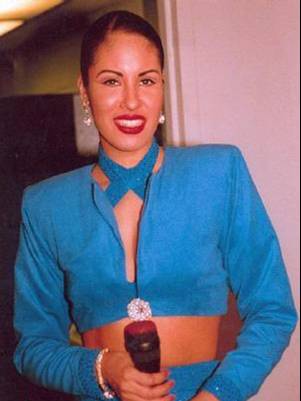 adds that no
one ever imagined she'd be capable of violence. He blames himself
for putting Selena in a position where she could become a victim by
pushing her into a musical career in the first place. "I think,
`What if I hadn't done that? What if we hadn't left the spiritual
things aside?' She would have been a dedicated servant of God." The
tragedy has brought the family closer together and led them to
rededicate themselves to their religious beliefs, Abraham says.
adds that no
one ever imagined she'd be capable of violence. He blames himself
for putting Selena in a position where she could become a victim by
pushing her into a musical career in the first place. "I think,
`What if I hadn't done that? What if we hadn't left the spiritual
things aside?' She would have been a dedicated servant of God." The
tragedy has brought the family closer together and led them to
rededicate themselves to their religious beliefs, Abraham says.
"We take life for granted, you know. In our daily hustle to make a
living, we forget our spiritual needs. I have no doubt that we'll
see Selena again, when she comes with the resurrection." Meanwhile,
he's still got a career to manage. It is a sad irony that Selena's
death has focused more national media attention on Tejano music than
it's ever received. "From this horrible, tragic death, there will be
some who come to know and hear of this music called Tejano," says
Rudy Trevino, the producer of the Tejano Music Awards. "Selena, of
course, was the single most important Tejano artist, even before her
death. She opened more doors than anyone." Behar expects the
explosion of awareness that followed Selena's death to have
long-term implications in the music business. Stores that have never
carried Latin music before are now stocking Selena's albums. Other
Tejano artists may follow. "Selena will be a superstar," Behar says.
"The last chapter of this story has not been written yet." While
Selena was proud of her Hispanic culture and heritage, she was
elated at the possibility of appealing to a wider audience by
singing in English. She had completed five tracks for her new album
at the time of her death.
The album signaled a new sound for Selena. She was being packaged as
a pop diva, comparable to Janet Jackson or Mariah Carey, but with a
Latin touch. "I Could Fall in Love" is projected as the first single
from the new album, due in July. The posthumous release also will
include A.B.'s remixes of "Bidi Bidi Bom Bom," "Como La Flor,"
"Techno Cumbia" and "Amor Prohibido," as well as two previously
unreleased tracks featuring Selena singing with a Mexican mariachi
band. EMI is negotiating for the rights to a duet Selena recorded
with David Byrne that was left off the soundtrack to "Don Juan
DeMarco." "That was her biggest dream, of crossing over," Abraham
says. "Because she was born here. She was an American." But for him,
Selena the superstar will never be more real than the image of the
nervous little girl making her debut at his restaurant in Lake
Jackson. He treasures his memories. "Every time I would see her, the
first thing she would do is come hug and kiss me," he says, his eyes
misting over. "I go home and I take the videos and tapes. Sometimes
she makes me laugh. The others, my kids and wife and Chris, it's too
painful for them. They see the videos and start crying. To me, it's
soothing. "It's like she's on vacation. She's still alive; she's
just not here."
